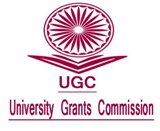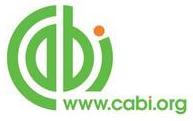Sources of Information and their Role in Influencing the Decision-Making Process among the Brackish Water Cage Farming Community in Kerala
DOI:
https://doi.org/10.26725/JEE.2021.4.33.6691-6699Keywords:
Farmers; Information Source; Socio-demographic; Cage culture; KeralaAbstract
In recent years, the Kerala University of Fisheries and Ocean Studies (KUFOS) along with theState Fisheries Department has been promoting brackish water cage farming by providing extensive online and field-level technical support to the farmers. There are various sources from which farmers gather information for adopting cage culture. A study was carried out among the brackish water cage farmers located in different regions of Kerala to identify the significance of various sources of information in adopting sustainable cage culture practices. The information platforms having various sorts of tools and methodologies are generally categorized into four: print media, visual media, social media, and the traditional type of training programme. All the sources selected for the study are a rich repository of information and insights on the subject under discussion. From the study, it was possible to identify the sources of information according to the magnitude of popularity among various farmers and corelating the same with the rate of adoption of a technology. The maximum number of farmers gathered information through training programme. Least number of farmers with mean score of 208 utilized print media as a medium to gather information on cage culture.References
De Jong, J. (2017). Aquaculture in India. Rijksdienstvoor Ondernemen d Nederland. 1-15.
Edwards, A. L. (1957). Techniques of attitude scale construction (No. 04; QA276, E39).
Furtan, W. H., Van Kooten, G. C., & Thompson, S. J. (1985). The estimation of off-farm labour supply functions in Saskatchewan. Journal of Agricultural Economics, 36(2), 211-220.
Harikumar, G., & Rajendran, G. (2007). An overview of Kerala fisheries with particular emphasis on aquaculture. Souvenir, Integrated Fisheries Project (IFP), Kochi, India, 1-19.
Joshua, N. E., Ojha, S. N., Immanuel, S., & Babu , S . (2015) . Aquaculture information exchange facilitating farmers. International Journal of Fisheries and Aquatic Studies 2015; 2(4).
Kappen, D. C., Kumar, D., & Divya, N. D. (2018a). Pioneer attempt on cage culture of giant trevally, Caranxignobilis through farmer participatory approach in Thiruthipuram Backwaters, Kochi, Kerala, India. Ambient Science, 5(2), 6-8.
Kappen, D. C., Dinesh, K., &Divya, N. D. (2018b). Constraints in the Adoption of Cage Aquaculture Practices in Ernakulam District, Kerala. Journal of Extension Education, 30(4)
Likert, R. (1932). A technique for the measurement of attitudes. Archives of Psychology,22(140), 1-55.
Mishra, A. K., & Goodwin, B. K. (1997). Farm income variability and the supply of off-farm labor. American Journal of Agricultural Economics, 79(3), 880-887.
Mittal, S., & Tripathi, G. (2009). Role of mobile phone technology in improving small farm productivity. Agricultural Economics Research Review, 22(347- 2016-16874), 451-460.
National Fisheries Development Board (2017), Mission brackish water- 2022, Retrieved from https://nfdb.gov.in/ PDF/E%20Publications/6%20Mission%20 Brackishwater-Saline%20Aquaculture%202017.pdf.
Nirmalkar, C., Lahiri, B., Ghsoh, A., Pal, P.,Baidya, S., Shil, B., & Kurmi, R. K. (2022). Perceived knowledge and attitude of fisheries extension professionals on usage of ICTs in Tripura.Indian Journal of Extension Education, 58(2), 58-64.
Ntiri, P., Ragasa, C., Anang, S. A., Kuwornu, J. K., & Torbi, E. N. (2022). Does ICT-based aquaculture extension contribute to greater adoption of good management practices and improved incomes? Evidence from Ghana. Aquaculture, 557, 738350.
Pieniak, Z., Vanhonacker, F., & Verbeke, W. (2013). Consumer knowledge and use of information about fish and aquaculture. Food policy, 40, 25-30.
Raza, M. H., Khan, G. A., Shahbaz, B., & Saleem, M. F. (2020). Effectiveness of information and communication technologies as information source among farmers in Pakistan. Pakistan Journal of Agricultural Sciences, 57(1).
Reed, W. R., & Harford, K. (1989). The marriage premium and compensating wage differentials. Journal of Population Economics, 2(4), 237-265.
Thakur, D., Chander, M., & Sinha, S. K. (2017). A scale to measure the attitude of farmers towards social media use in agricultural extension. Indian Research Journal of Extension Education, 17(3), 10-15.
Unnikrishnan, K. V., & Dinesh, K. (2020). Socio - Economic Analysis of Brackishwater Cage Culture in Kerala. Journal of Extension Education, 32(2), 6500-6507.
Downloads
Published
How to Cite
Issue
Section
License
Copyright (c) 2021 https://creativecommons.org/licenses/by-nc-sa/4.0/

This work is licensed under a Creative Commons Attribution-NonCommercial-ShareAlike 4.0 International License.
Authors who publish with JEE agree to the following terms:
- Authors retain copyright and grant JEE right of first publication with the work simultaneously licensed under a Creative Commons Attribution License that allows others to share the work with an acknowledgement of the work's authorship and initial publication in this journal.
- Authors are able to enter into separate, additional contractual arrangements for the non-exclusive distribution of the journal's published version of the work (e.g., post it to an institutional repository or publish it in a book), with an acknowledgement of its initial publication in this journal.
- Authors are permitted and encouraged to post their work online (e.g., in institutional repositories or on their website) prior to and during the submission process, as it can lead to productive exchanges, as well as earlier and greater citation of published work (See The Effect of Open Access).
Extension Education Society
https://creativecommons.org/licenses/by-nc-sa/4.0/
This work is licensed under a Creative Commons Attribution-NonCommercial-ShareAlike 4.0 International License.













.png)

